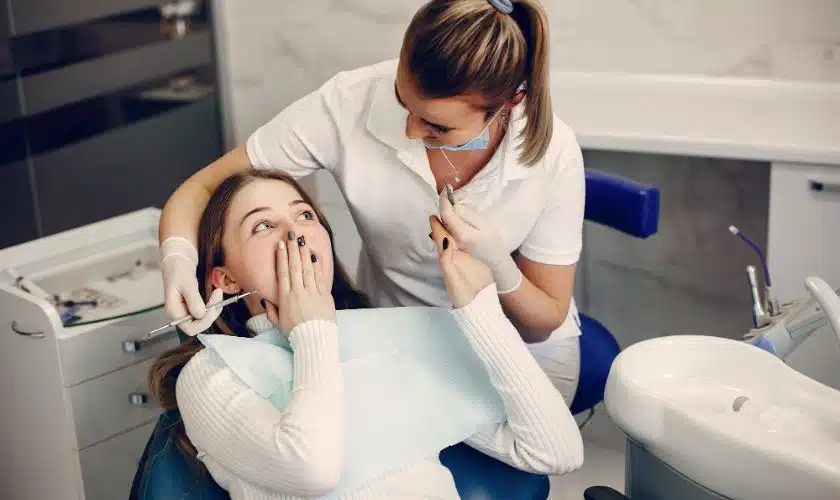Urgent dental care addresses conditions that require prompt attention to relieve severe pain, stop ongoing bleeding, or manage a potentially serious infection. While not all dental problems are emergencies, certain situations can worsen without immediate assessment from a dental professional. Knowing how to respond can help manage the situation effectively until you can receive care. Here’s information on when to visit an emergency dentist:
Severe Toothache
A severe toothache is a persistent, intense pain that over-the-counter pain relievers are unable to resolve. This type of pain often indicates an underlying issue that requires prompt evaluation. When a toothache is accompanied by swelling in your face or gums, a fever, or occurs after a recent injury, it is recommended that you promptly seek urgent dental care.
Severe toothaches are urgent because they may signal a deep cavity, a cracked tooth, or a serious infection that could spread. A dentist will first assess the source of the pain, which may involve a visual examination and dental imaging, like X-rays. Depending on the cause, treatment could include cleaning the affected area, placing a temporary filling, or draining an infection. The dentist may also provide prescriptions or refer you to a specialist for further care.
Knocked-out Tooth
Losing a permanent tooth due to an accident or injury requires immediate action to improve the chances of saving it. Taking the right steps in the first few moments is fundamental. Here are the steps to take:
Immediate At‑Home Steps
If a tooth is knocked out, stay calm and act quickly and carefully:
- Handle Your Tooth by the Crown: Only touch the chewing surface, not the root.
- Gently Rinse the Tooth: Use water or milk to clean off any debris gently, but avoid scrubbing or using soap.
- Attempt To Reinsert It: If possible, gently push the tooth back into its socket without forcing it. Hold it in place by biting down on a clean cloth or gauze.
- Keep Your Tooth Moist: If you cannot reinsert your tooth, place the tooth in a small container of milk or a saline solution. You can also hold it in your mouth next to your cheek. Do not store it in plain water.
- Manage Bleeding: Apply gentle pressure with gauze to the empty tooth socket. A cold compress on the outside of your cheek can also help reduce swelling.
In‑Office Treatment Options
Once you arrive at a dental office, a professional will take over. The dentist will evaluate the tooth and the socket to determine the best course of action. This typically involves cleaning the socket and, if viable, carefully reimplanting the tooth. To keep the tooth stable while it heals, the dentist may attach it to neighboring teeth with a splint. Imaging can assess any damage to the jawbone or surrounding tissues, and your dentist will discuss the healing process.
Swollen Dental Abscess
A dental abscess is a localized collection of pus that forms near a tooth or in the gums, which results from a bacterial infection. It often appears as a painful, pimple-like swelling. This condition requires urgent dental care because the infection can cause significant pain and swelling, and it has the potential to spread to other parts of your body.
When treating an abscess, a dentist’s primary goal is to drain the infection and relieve the pressure that it causes. The area will be evaluated, and the dentist will then make a small incision to allow the pus to drain. After draining, the area is cleaned thoroughly.
Depending on the source and severity of the infection, further treatment might be necessary. Some additional treatments may include a root canal or tooth extraction to stop infection. Your dentist may also prescribe antibiotics to help clear the infection and will schedule follow-up appointments to make sure the site heals correctly.
Find Urgent Dental Services Near You
If you are experiencing a dental emergency, contact a dentist immediately. Describe your symptoms clearly so they can provide appropriate guidance. While you wait for your appointment, you can use cold compresses to manage swelling and take over-the-counter pain relievers as directed on the label. Do not delay seeking professional care, as prompt treatment is key to resolving urgent dental issues.


